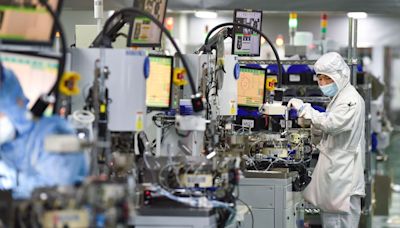Search results
Beijing, alternatively romanized as Peking, is the capital of China. With more than 22 million residents, Beijing is the world's most populous national capital city as well as China's second largest city after Shanghai.
- Tongzhou District
Tongzhou is a district of Beijing.It is located in southeast...
- China Central Television Headquarters Building
The CCTV Headquarters is a 51-floor skyscraper formed out of...
- List of Administrative Divisions of Beijing
County / City Present division Beiping City 北平市: Dongcheng,...
- Peking (Disambiguation)
Peking is an alternate and mostly obsolete romanization of...
- Jingjinji
Jing-Jin-Ji cluster is an expanded urban agglomeration...
- Temple of Heaven
The Temple of Heaven (simplified Chinese: 天坛; traditional...
- Beijing Dialect
The Beijing dialect (simplified Chinese: 北京话; traditional...
- Geography
Total: 16,801 square kilometres (6,487 sq mi) Beijing is a...
- Tongzhou District
- Overview
- Character of the city
The residents of Beijing speak a dialect of Mandarin Chinese that forms the basis of Modern Standard Chinese (Guoyu), or putonghua (“common language”), which is commonly taught throughout the country.
What UNESCO World Heritage site is found at the heart of Beijing?
The Forbidden City is an imperial palace complex at the heart of Beijing, designated a UNESCO World Heritage site in 1987 in recognition of its importance not only as the centre of Chinese power for five centuries but also for its unparalleled architecture and adherence to the practice of feng shui.
What is the former name of Beijing?
The former name of Beijing is Beiping (Pei-p’ing; “Northern Peace”). The third Ming emperor gave it the new name of Beijing (“Northern Capital”) during the 15th century.
How long has Beijing been the capital of China?
Although much of Beijing’s older and more picturesque character has been destroyed in the drive since 1949 to modernize and industrialize, some parts of the city are still redolent of the past. Many fine monumental buildings, old restaurants, and centres of traditional Chinese arts and crafts remain, and the central government has taken measures to prevent the city core from being further industrialized. Broad new boulevards, replete with even newer commercial ventures, have displaced the colourful stalls and markets for which the city was once famous, but the neighbourhood life of old Beijing can still be glimpsed in the narrow hutongs (residential alleys), with their tiny potted-plant gardens, enclosed courtyards, and (decreasingly) coal-burning stoves—some of which are still guarded by carved stone lions at their gates.
Britannica Quiz
Asian Capitals Quiz
People in Beijing commute by subway, bus, automobile, or bicycle and on hot summer evenings sit outside their apartment blocks to catch cooling breezes and to chat. The citizenry has a wide range of leisure pursuits, particularly those considered good for health. The ancient art of tai chi chuan (taijuquan; Chinese boxing) is widely practiced, singly or in groups, along roadsides and in parks. Locals as well as tourists are attracted to the many nearby historical sites, such as the Summer Palace, the tombs of the Ming emperors, and the Great Wall. Older people, especially the men, like to huddle in tiny restaurants and tea shops. Young people are drawn to the city’s many cafés and nightclubs, where the entertainment can range from DJ-run dance music to Chinese rock bands.
For all the vicissitudes of its history, Beijing continues to be a source of great pride for its inhabitants. Their obsessions are, as they have been for centuries, food and knowledge: they eat heartily when they have the means and read voraciously. Food stalls on the streets, selling a variety of cooked treats, are well patronized, as are newspaper and magazine kiosks. The ambition of most families is to provide their offspring with a higher education or, if not that, a good job.
Special offer for students! Check out our special academic rate and excel this spring semester!
Beijing Municipality has a population of almost 22.5 million (almost as many as Australia), in an area of 16,800 square kilometers (or 6,500 square miles). It is China's second-largest city after Shanghai. It's important to plan your time in Beijing well, as the crowds and traffic congestion, not to mention its sheer size, are big challenges. A ...
Basic Facts: English Name: Beijing, Peking. Chinese Name: 北京 (běi jīng) Government: Municipality; Capital of China. Location: Northern China (39°54′N, 116°23′E) Area Code & Zip Code: Area Code: 010; Zip Code: 100000. Airports: Capital International Airport , Daxing Airport , Nanyuan Airport. Railway Stations:
Sep 2, 2019 · Land Area: 6,487 square miles (16,801 square kilometers) Bordering Areas: Hebei Province to the north, west, south, and part of the east and the Tianjin Municipality to the southeast. Average Elevation: 143 feet (43.5 meters)
People also ask
How big is Beijing?
Where is Beijing located?
What are some interesting facts about Beijing?
How many people live in Beijing?
Covering an area of approximately 16,410 square kilometers (6,336 square miles), Beijing is not only massive in size but also deeply significant in terms of culture, politics, and economics.





